Angela Ackerman's Blog: Writers Helping Writers, page 62
August 5, 2021
3 Mistakes To Avoid with Your Side Characters
Help me welcome Resident Writing Coach Alumni Sacha Black, who has just an excellent post on how to avoid creating story problems caused by mismanaged side characters. Here’s a bit more about the Rebel Leader of the Bookish World:

Sacha Black is a bestselling and competition winning author, rebel podcaster, and professional speaker. She writes educational nonfiction books for writers and fantasy books for both Young Adult and adult audiences. She lives in Cambridgeshire, England, with her wife and son.
Take it away, Sacha…
Everybody loves their heroes, some people even love their villains. But it���s a rare author that actively loves and spends equal time on their side characters. Sure, some of them are fun to write, but they���re not who the story is about, which is why so many of them are simply slapped on and ill-thought out. Today, I���m going to help you combat that by giving you three mistakes to avoid when creating your side characters.
Mistake 1 ��� Weighing Side Characters IncorrectlyNot all side characters are created equal. While some craft teachers talk about archetypes, I prefer to look at side characters in terms of their effect and influence on the story.
Here are the three main types of side characters:
Cameos are brief and fleeting, usually nameless or with a generic label ���guard, receptionist, girl with the teddy���. They leave no mark on the story and are forgettable. Think the woman in the red dress in the Matrix, or Marvel comic writer Stan Lee���s appearances in the Marvel films.Minor characters are still fleeting, they still don���t leave much of a mark on the story save for transactional exchanges like a barman or a shop owner. Think Mr. Filch in Harry Potter.Major characters are usually scarce, only a handful of them in most stories. They have their own subplots and character arcs, they should represent the book���s theme too. Think Ron and Hermione in Harry Potter.Too often, writers try to give minor characters character arcs, or they don���t give enough attention to a character that���s supposed to have an arc or subplot. Understanding the different types of side characters should enable you to give the right amount of page time and depth to each character.
Mistake 2 ��� Thinking You Need Comprehensive Character Arcs
Character arcs are easy for protagonists, you get the entire book to explore it. But side characters don���t get as much page time as protagonists. So how do you show the depth of arc you need without the side character taking over?
Well, you can���t. At least, not exactly anyway.
What you can do is create the illusion of an arc.
You���ll need to show the ���what��� of what they want (and the fact they don���t have it) at the start of the story. For example, early on in the Harry Potter series, we see Hermione wanting to be academically brilliant and pass all her exams. After that, you need to show a struggle to achieve the goal somewhere in the middle of your story. And, if we���re talking Harry Potter, then Hermione gets her own subplot devoted to this where she uses the Time-Turner to take more lessons than is scientifically possible. Near the end of your book, you���ll have to show the resolution i.e., Hermione passes all her exams and does well, or by the end of the series she realizes it���s not really as important as she once thought.
The beauty of a side character arc is that you can flex it up and down. Want to show a little more depth? Add another scene or two with the character grappling to change. Need to cut down your word count? Then reduce the number of scenes focusing on side character arcs.
The trick to making a side character arc work well is to connect it to the protagonist and, if possible, the theme. In Hermione���s case, her academic brilliance both impedes her friendships with Ron and Harry but also helps them at various points when she has useful bits of information about spells or wizardry.
Mistake 3 ��� Not Having a Reason for Existing Outside the ProtagonistTo create more depth in your side characters and to make them seem realistic, use the three ���whys��� method.
Each side character should have:
�� A protagonist why
�� A life why
�� A scene why
The Protagonist Why
Even though you want your side characters to look like they���re full and comprehensive, ultimately, in story terms, they exist to either help or hinder your protagonist. That���s their ���protagonist why���. Are they in the story to make the protagonist stop and think? To help them reflect? To protect them? Teach them? Or perhaps put obstacles and barriers in their way? You need to know what their ���protagonist why��� is.
The Life Why

Protagonist aside, to help create the illusion of depth, your major side characters should have something they want outside the protagonist. Do they need to come out to their family? Are they trying to get a big important job? Maybe they want to win an award. Whatever their own ���life why,��� if you can make it serve the story by reflecting the theme or perhaps allowing the side character���s goal to interfere with the protagonist���s all the better. For example, in the above Harry Potter example, Hermione���s ���life why��� is to do well academically. It interferes with her friendships in both positive and negative ways.
Scene Why
Have you ever read a scene where half a dozen characters enter, two or three of them have a conversation, and then all six leave again? I can���t tell you the number of manuscripts I���ve read where that happens. When you have a group of characters in a scene, each character must do one or all of the following:
Do somethingSay somethingBring information Cause a problemOr fix a problemI���m sure there are other things a character could do in a scene, but the point is, they must be doing something. If they���re not engaged in dialogue, tension creation, tension easing, or action of some kind, then they���re surplus to requirements and need to be removed. Too many instances of ���surplus to requirements��� and you have to question whether you need the character at all.
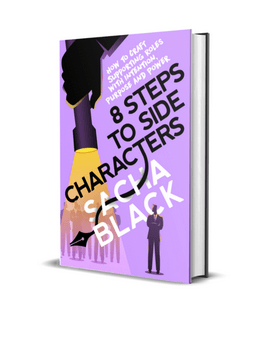
If you can avoid these three mistakes you will craft stronger characters. Knowing the importance of a cameo versus a major character will help you manage your cast more effectively, focusing on those characters that need the attention for the sake of your story. Remember, with side characters, it���s only the illusion of an arc you���re creating, not a comprehensive one like a protagonist. Last, try to ensure each major side character has three ���whys���. Do those things and you���ll avoid the most commonly occurring mistakes with side characters and build better stories.
If you enjoyed these tips, then you can find out more about building better side characters in Sacha Black���s latest craft book for writers: 8 Steps to Side Characters: How to Craft Supporting Roles with Intention, Purpose and Power.
The post 3 Mistakes To Avoid with Your Side Characters appeared first on WRITERS HELPING WRITERS��.
July 31, 2021
Relationship Thesaurus Entry: Adult Child and Elderly Parent
Successful stories are driven by authentic and interesting characters, so it���s important to craft them carefully. But characters don���t usually exist in a vacuum; throughout the course of your story, they���ll live, work, play, and fight with other cast members. Some of those relationships are positive and supportive, pushing the protagonist to positive growth and helping them achieve their goals. Other relationships do exactly the opposite���derailing your character���s confidence and self-worth���or they cause friction and conflict that leads to fallout and disruption. Many relationships hover somewhere in the middle. A balanced story will require a mix of these dynamics.
The purpose of this thesaurus is to encourage you to explore the kinds of relationships that might be good for your story and figure out what each might look like. Think about what a character needs (good and bad), and build a network of connections for him or her that will challenge them, showcase their innermost qualities, and bind readers to their relationship trials and triumphs.
 Adult Child and Elderly Parent
Adult Child and Elderly ParentDescription:
The relationship between a child and their elderly parent can be riddled with challenges. Oftentimes, the child must care for the aging parent as their health needs rise and their ability to maintain independence declines. But the roles are sometimes reversed, with an elderly parent still needing to fill the parental role for their adult child. If existing conflict is a major factor in the relationship, dynamics such as neglect, resentment, and strife may preclude each party from meeting one another���s needs.
Relationship Dynamics
Below are a wide range of dynamics that may accompany this relationship. Use the ideas that suit your story and work best for your characters to bring about and/or resolve the necessary conflict.
An elderly parent and adult child who speak everyday (via phone, Skype, FaceTime, etc.) and offer mutual support
The younger party caring for their aging parent in the child’s home
An elderly parent who actively supports the child and their family (babysitting, driving them to the airport when they’re going out of town, helping out financially, etc.)
An amiable relationship that is distant or superficial
One party only reaching out to the other when they need help
One party being ignored or neglected by the other
Personality differences or past wounds making intimacy between the parties difficult
One party verbally or physically abusing the other
A codependent dynamic
One party tolerating the other for short periods of time until they can’t take being with them anymore
The two being unable to stay in the same room together
An estranged relationship between the two
An open feud going on between the two
Challenges That Could Threaten The Status Quo
The elderly parent getting injured, falling ill, or receiving a life-changing medical diagnosis
The spouse of either party leaving or dying
Either party losing their home or financial stability
The elderly parent losing the ability to function independently (driving, maintaining property, caring for themselves, etc.)
The child moving far away
The child having a baby, which brings an estranged parent back into their life
The elderly parent changing their will
The elderly parent re-marrying
The child no longer being able to pay for assisted living or in-home care for the aging parent
The elderly parent being the victim of a crime or abuse at the hands of a caregiver
Communication methods such as phone or email no longer being available
The elderly parent disagreeing with the child’s choices
Either party revealing a long-kept secret
A repressed memory involving the two parties surfacing
The child���s spouse refusing to be a part of the elderly parent���s care
The elderly parent expressing end-of-life or palliative care preferences the child does not support
Conflicting Desires that Can Impair the Relationship
The elderly parent wanting to maintain independence, and the child not believing that he or she is capable
The child wanting to help an ailing parent but having other responsibilities that make it difficult to do so
The child wanting to help a parent who is unwilling to agree to the child’s reasonable requests (not making racist comments in front of the grandkids, stopping smoking in the child’s house, etc.)
The parent wanting to be cared for by the child while the child wants to bring in outside help
The elderly parent refusing medical care or support that the child feels is critical
Both parties disagreeing about the level of care the elderly parent needs
The child wanting the elderly parent to move in with them but the parent wanting a different arrangement
One party wanting an unreasonable amount of gratitude for the role they’re playing
The child wanting access to the elderly parent’s money
Clashing Personality Trait Combinations
Independent and Needy, Judgmental and Oversensitive, Responsible and Uncooperative, Trusting and Manipulative, Nurturing and Withdrawn, Controlling and Rebellious, Persuasive and Weak-Willed
Negative Outcomes of Friction
The parties becoming estranged
Feelings of resentment and anger growing within the relationship
Fighting with other family members about the parent’s care
The needs of the elderly parent being neglected
Feeling inadequate to meet the needs of a loved one
An elderly parent seriously declining due to lack of care
The elderly parent feeling as if they have no control over their own life
Both parties experiencing a loss of privacy
Either party refusing to change and grow
Fictional Scenarios That Could Turn These Characters into Allies
Coming together through a divorce, a challenging birth, or the death of a loved one
Working together to meed the needs of a grandchild
Needing to find a care scenario that will satisfy both parties
One party being diagnosed with a serious illness or facing financial ruin
One party being able to share wisdom and insight, challenging the other party’s perception of him or her
The two parties needing to cohabitate to meet each other’s needs
Ways This Relationship May Lead to Positive Change
Close proximity requiring both parties to become more accommodating and accepting
The passing of valuable knowledge and insight into family history and life lessons
One party seeking to become more like the other (in a good way)
Receiving love and appreciation for filling a need
Recognizing the importance of the parent’s role in the child’s life and deciding to value them and nurture the relationship before it’s too late
Having an opportunity to do things differently or start over (if there has been previous turmoil)
Themes and Symbols That Can Be Explored through This Relationship
A Fall from Grace, Alienation, Crossroads, Death, Depression, Disorder, Endings, Family, Friendship, Health, Hope, Illness, Inflexibility, Journeys, Knowledge, Love, Passage of time, Refuge, Sacrifice, Suffering, Unity
Other Relationship Thesaurus entries can be found here .
 Need More Descriptive Help?
Need More Descriptive Help?While this thesaurus is still being developed, the rest of our descriptive collection (15 unique thesauri and growing) is accessible through the One Stop for Writers THESAURUS database.
If you like, swing by and check out the video walkthrough, and then give our Free Trial a spin.
The post Relationship Thesaurus Entry: Adult Child and Elderly Parent appeared first on WRITERS HELPING WRITERS��.
July 29, 2021
Genre Switching: Launching a Successful Career in a New Genre
Admit it, you’ve thought about cheating. After all, there’s so many to choose from, why tie yourself down to one genre? (Hey, what did you THINK I was talking about?)

The reality is we’re always growing and changing, and sometimes that means delving into a new genre that we’re unfamiliar with writing. Maybe we go from non-fiction to fiction, or children’s fiction to memoir. When there’s a big shift, there’s also a learning curve. Rochelle Melander has navigated this move and is here with some great advice on how to make this a smoother transition. Read on! ~ Angela
When I launched my writing career in the late 90s, I knew I wanted to write for children. But with two master���s degrees and professional training as a life coach, I found immediate success writing articles, resources, and books. In 2017, I got serious about getting a children���s book published. In 2019, I landed a book contract for Mightier Than the Sword: Rebels, Reformers, and Revolutionaries Who Changed the World through Writing, which came out this week.
If you want to boost your writing career, you can write more books, start a blog, write for hire, ghostwrite, and so much more. Genre switching might be one of the most challenging ways to expand your writing. But it also brings many benefits: writing in a new genre will inspire you, strengthen your writing muscles, and expand your platform. Here���s how to start:
1. Build on your strengths
Whether you���re trying to find a new genre or have one in mind, you can speed up your progress and ease the transition by assessing your current strengths. I���ve written picture books and middle grade novels. But when I got serious about getting published, I knew that I had the best chance of breaking into the market by writing a nonfiction book. I could use the skills I���d developed to write about famous writers. And writing about writing would build on my established platform.
Try this:
List what you already do well as a writer. Be sure to include both craft and business skills.Brainstorm ways you could use these skills in a new genre. At this point, don���t limit yourself to the genre you���re leaning toward. This will help you expand your thinking about what���s possible for you.
Note the specific skills you can use in your chosen genre.2. Get schooled.
No matter how much writing education and experience you have, switching genres requires learning about the craft and market. Picture book author Kira Bigwood has two degrees in writing and works as a copywriter by day, but she studied and wrote for several years before she sold her debut picture book, Secret, Secret Agent Guy. She said, ���You wouldn���t expect to know how to perform surgery without going to med school, so why would you think you could write a children���s book without first putting in the work (I���m talking to myself here).���
Try this:
Check out your new genre���s professional organization���and see if they offer classes. I���m a member of the Society of Children���s Book Writers and Illustrators, and I used that membership to find classes. Follow the leaders in the field, and read their bios: where did they learn the craft? Read as much as you can, focusing on articles and books published in the last five years.
3. Get help.You can take a gazillion classes, but at some point you���re going to need specific feedback on your writing. Whether you join a critique group, get a critique partner, or hire a professional editor, you need someone who knows the genre to read your work. They will be able to tell you if your work sounds contemporary. Retired educator and children���s book author Sandy Brehl said, ���My critique partners worked hard to keep me from slipping into ���teacher voice��� and just let information work itself into the natural storyline��� or land on the cutting room floor!���
4. Know your why
Succeeding in a new genre takes time, hard work, and persistence. You will have moments when you want to give up. According to Simon Sinek, author of Find Your Why, it helps to ���know the purpose, cause or belief that inspires you to do what you do.��� Whenever you feel like giving up, get connected to your purpose, your why. Knowing that you are writing books to inspire children or bring joy to tired adults or teach people���that will keep you going when you���re facing obstacles.
In 2006, I founded a writing program for young people in Milwaukee. I wrote Mightier for the children I���d taught for years. I knew that they would love reading stories about young people just like them who found their voice, wrote their truth, and changed the world in the process. When I got stuck, remembering them helped me to keep moving forward.
Try this:
Connect your hardest tasks to your why. I encourage my clients to write a goal statement that includes their when and their why:
Each morning, I will write my romance novel so that it will bring joy to people!
Here���s the template:
When: [Time frame]
I will: [Your task and goal]
So that: [Your why]
In the midst of writing, publishing, and marketing a book in a new genre, it���s easy to forget the passion and joy that inspired your decision to jump into a new playground. What seemed joyful at first can begin feel like drudgery���especially when you encounter obstacles. When you get stuck, remember why you started on this journey. Embrace the delicious parts. Take time to play with words. You will be happier. You���ll write better. And you���ll delight your readers.

Rochelle Melander wrote her first book at seven and has published 11 books for adults, including Write-A-Thon: Write Your Book in 26 Days (and Live to Tell About It) and Level Up: Quests to Master Mindset, Overcome Procrastination and Increase Productivity.
Through her writing and work as a professional certified coach, Rochelle Melander helps writers, creatives, and entrepreneurs overcome distractions and procrastination, design a writing life, turn their ideas into books, navigate the publishing world, and connect with readers through social media. Mightier Than the Sword: Rebels, Reformers, and Revolutionaries Who Changed the World through Writing is her debut book for children. Visit her online at writenowcoach.com or rochellemelander.com
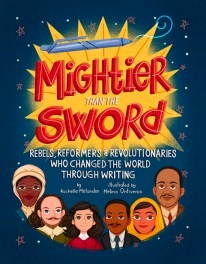
About the book: Mightier Than the Sword: Rebels, Reformers, and Revolutionaries Who Changed the World through Writing is a middle grade social justice book pairing life changing writing exercises with the stories of a diverse group of people who changed lives and communities throughout history.
The book features people from a variety of disciplines who used their words to educate people about the stars, advocate for women���s rights, end slavery, save the environment, protest injustice, and more.
The post Genre Switching: Launching a Successful Career in a New Genre appeared first on WRITERS HELPING WRITERS��.
July 24, 2021
Relationship Thesaurus Entry: Spouses and Partners
Successful stories are driven by authentic and interesting characters, so it���s important to craft them carefully. But characters don���t usually exist in a vacuum; throughout the course of your story, they���ll live, work, play, and fight with other cast members. Some of those relationships are positive and supportive, pushing the protagonist to positive growth and helping them achieve their goals. Other relationships do exactly the opposite���derailing your character���s confidence and self-worth���or they cause friction and conflict that leads to fallout and disruption. Many relationships hover somewhere in the middle. A balanced story will require a mix of these dynamics.
The purpose of this thesaurus is to encourage you to explore the kinds of relationships that might be good for your story and figure out what each might look like. Think about what a character needs (good and bad), and build a network of connections for him or her that will challenge them, showcase their innermost qualities, and bind readers to their relationship trials and triumphs.
SPOUSES AND PARTNERS
Description:
For the purposes of this entry, we have defined romantic partners or spouses as people in a committed relationship; they may be married or not, living together or separately. As in any partnership, individual needs and wants will always have to be balanced with what’s best for the relationship as a whole. Careers, children, finances, and lifestyle choices can also create grounds for complications.
Relationship Dynamics
Below are a wide range of dynamics that may accompany this relationship. Use the ideas that suit your story and work best for your characters to bring about and/or resolve the necessary conflict.
A couple who is deeply in love, with each person dedicated to serving the needs of the other
Struggling partners who are devoted to making the relationship work, no matter the sacrifice
A loving couple who aren’t currently making each other top priority due to outside circumstances or a temporary stage of life (financial difficulties requiring one person to work long hours, a special needs child needing a lot of attention, a long commute to a new job squeezing out family time, etc.)
One partner being more committed to the relationship than the other party
A partnership consisting of one party who was cheated on in the past and has a hard time trusting
A relationship being undermined by addiction, infidelity, or mental health challenges
An abusive partnership
The two people not being on the same page (regarding having children, childrearing methods, management of finances, sex, etc.)
A longtime couple whose hobbies and interests have changed over time, leaving them with little in common
A couple who are married in name only, having little to no intimacy, trust, or relationship
Struggling partners who are staying together for reasons other than love (to keep from hurting the kids, because they believe divorce is morally wrong, because it’s financially prudent to stay together, etc.)
Partners who put on a happy face in public but are unhappy in private
An open relationship with third parties being brought into the fold
Challenges That Could Threaten The Status Quo
A partner or spouse having an affair
One person being offered a job that will drastically impact the couple���s home life (a move, erratic hours, less pay, etc.)
The couple finding out they’re pregnant
A spouse being fired
Someone being arrested or sued
One person���s hidden secret being discovered (a sexual or gender orientation, a past crime, etc.)
A love-child from a former relationship knocking on their door
One person developing an addiction
One person working too much��
The relationship becoming a long-distance one due to work or family needs
An ex coming back into the picture
One person suffering from physical or mental health difficulties
One or both people suffering a traumatic event (an accident, natural disaster, victimization, etc.)
One partner developing intense interest in something that the other partner don’t like
The couple disagreeing on how to best raise their child��
One person become abusive
Discovering one���s partner or spouse has another family
The couple experiencing infertility, a miscarriage, or the loss of a child
One party comparing the relationship to others and becoming dissatisfied (with their financial status, where they live, how they interact, etc.)
Conflicting Desires that Can Impair the Relationship
One partner wanting to get married or have children while the other does not
One spouse wanting to divorce or break up
One party wanting to save money while the other wants to spend it
One party wanting more involvement with extended family than the other
Both parties having different desires for the frequency or kind of communication in the relationship
One party wanting to relocate while the other does not
One party losing romantic interest in the other
Both parties holding onto differing religious beliefs and expecting the other to change
One party wanting a career that the other does not support
One party wanting to openly date or bring an outside party into the relationship
One party wanting control over the other party
The couple disagreeing on how to support a family member who is facing difficulties
Clashing Personality Trait Combinations
Persuasive and Weak-Willed, Trustworthy and Dishonest, Controlling and Rebellious, Independent and Needy, Cautious and Reckless, Abrasive and Oversensitive
Negative Outcomes of Friction
Separation, estrangement, or divorce
Growing apart over time
Turning against each other
The relationship developing a power imbalance
Resentment over what it takes to make the relationship work
Loss of friends or family members who do not support the relationship
Lying to others to hide what is really happening
Arguments and fights
Feeling trapped in the relationship
Giving up on fixing the relationship; deciding to be satisfied with how things are
Living in denial about what’s wrong and the severity of the problem
One party turning to someone outside the relationship to meet their needs
Fictional��Scenarios That Could Turn These Characters into Allies
Experiencing a traumatic event
Experiencing a joyous event together (a pregnancy, the birth of a child, being named godparents, etc.)
Having to come together to deal with an invasive third party, such as an in-law or ex
Supporting someone through a difficult time, medical diagnosis, or addiction
Finding common ground in religious beliefs
Being forced to start over (from moving to a new location away from family or becoming empty nesters, for instance)
A situation arising that could fulfill a dream for both parties, such as being given the opportunity to start a nonprofit, volunteer at a beloved charity, or start a business together
Close friends ending their long-term relationship, providing the couple with the motivation to heal their marriage
Ways This Relationship May Lead to Positive Change
One person serving the other, providing an example for the partner to do the same
Understanding the need for give and take
Therapy helping a wounded partner heal from past relationships (romantic, parental, etc.)
One party being able to see things from their partner’s perspective
Both partiers learning to extend and receive forgiveness and grace
Each party seeing how their have contributed to the problems and making amends
Mutual love and respect leading to increased satisfaction
The couple’s children seeing the characters learn, grow, and fight for their relationship and vowing to do the same
Themes and Symbols��That Can Be Explored through This Relationship
A fall from grace, Alienation, Betrayal, Crossroads, Depression, Endings, Family, Freedom, Friendship, Health, Illness, Inflexibility, Instability, Isolation, Journeys, Loss, Love, Passage of time, Perseverance, Sacrifice, Stagnation, Suffering, Teamwork, Vulnerability, Wealth
Other Relationship Thesaurus entries can be found here.
 Need More Descriptive Help?
Need More Descriptive Help?While this thesaurus is still being developed, the rest of our descriptive collection (15 unique thesauri and growing) is accessible through the One Stop for Writers THESAURUS database.
If you like, swing by and check out the video walkthrough, and then give our Free Trial a spin.
The post Relationship Thesaurus Entry: Spouses and Partners appeared first on WRITERS HELPING WRITERS��.
July 22, 2021
Fight, Flight, or Freeze: What’s Your Character’s Go-To Response?
Fight or flight.
I think we���ve all heard the phrase. It refers to the way each person is hard-wired to react to real or perceived danger. Psychologists have recently added another option, giving us three ways we might respond to threats: we fight back, we flee, or we freeze up. This happens in life-or-death situations, but it also occurs on a smaller scale whenever we feel endangered:
At the mall, when you see someone who mistreated you in the past
At work, when the boss criticizes your work
At a party, when a friendly conversation takes an uncomfortable turn
At school, when you hear an ugly rumor someone has started about you
So whether the situation is potentially fatal or just a little threatening, you���re going to respond in one of those three ways. What does that look like? Here are few possibilities that cover a range of intensity:
Fight Responses
Confronting the offending party
Invading their personal space
Shifting the conversation to something that will make the other person uncomfortable
Verbally or physically attacking the person
Seeking revenge
Subtly changing the subject
Taking a step back or turning slightly away from the group when a conversation becomes uncomfortable
Avoiding certain people, places, or topics
Literally fleeing���moving away from the source of discomfort
Laughing it off; acting like there is no threat
Not answering when one is addressed
Stumbling to a halt
Feeling paralyzed, as if one is physically unable to move
Squeezing the eyes shut and going still
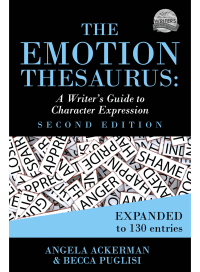
This is obviously just a sampling; more responses can be found for specific emotions in the��Second Edition of The Emotion Thesaurus.
Because this is how we react to real or perceived danger as human beings, it���s important to know which way are characters will lean. Figuring out their fight, flight, or freeze tendency early on can help in a number of ways.
The 3 Fs Provide CharacterizationWhile every character���s specific response to threats is going to be unique, they will each have a general tendency toward one of the three Fs. We need to know these tendencies so we can write our cast members consistently. This is especially important for main characters���protagonists, villains, love interests, etc.���because they���ll have more screen time; more things will be happening to them, providing more opportunities for reactions.
So before you start writing, ask yourself: Is this character more likely to fight, flee, or freeze in a threatening situation? When that scenario arises in the story, you���ll know their general kind of response. Then you can individualize the reaction to fit your character.
The 3 Fs Can Serve Your StoryThreatening scenarios���even small-scale ones���are tension builders, so hopefully you���ll include many of them in your story. But sometimes you���re looking for a certain kind of response: you need someone to run away or do nothing (avoiding the problem and allowing it to worsen) or go on the attack (causing more problems and making things more difficult).
If you���ve done your research and it���s time to start writing scenes, you can then conduct a casting call: use the characters who will serve your story best in that moment. If a scene needs conflict but your protagonist tends to shy away from trouble, team them up with a friend, co-worker, or rival who is impulsive or thrives on confrontation. If you don���t want to kill the tension by resolving a problem too quickly, pair a fighter with someone who���s reluctant to face conflict.
Each scene needs different things. (For more help on planning and structuring at this level, check out One Stop for Writers’ Informal and formal Scene Maps). The more you know about your characters beforehand, the better equipped you���ll be to figure out who should be involved in various parts of the story.
The 3 Fs Provide Clues to Hidden Emotion
Let���s face it: none of us are 100% honest. We temper our words to accommodate the people around us. We hide our true opinions. We only show ���safe��� emotions���the ones that don���t make us feel vulnerable in the moment. This leads to us often hiding what we really feel.
Characters should do the same. When they feel threatened or vulnerable, they���ll try to hide that by conveying a false emotion.
Writing hidden emotion��can be tricky because you have to show the false emotion to the rest of the cast while revealing the real emotion to the reader. There are a number of ways to effectively get this information across, and one of them is through the fight-flight-or-freeze response.��Consider the following example from��The Emotional Wound Thesaurus:
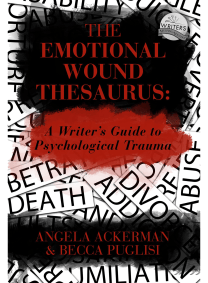
Sara poured sugar in her coffee and stirred, the clink of the spoon melodic against the cozy murmur of voices from neighboring tables. Sunlit, with a breeze coming off the water, the outdoor caf�� was so peaceful this time of day���before the high school kids took it over.
���I like this place,��� Mom said, blowing on her tea. ���It reminds me of where I used to go as a girl.���Sara smiled and leaned back, the wooden seat slats warming her skin. ���The place with the ��clairs?���
���Mmmm. That���s the one.��� Mom took a sip, then her eyebrows shot up. ���Oh, a friend of yours showed up at Mass on Sunday. Annemarie? Marybeth?��� She shook her head. ���Something with two names.���
Sara jerked, dousing her hand in hot coffee. She set the cup down with a clatter and shrugged. Don���t know who you mean.
���My memory these days���I swear.��� Mom sighed. ���She said you worked together last summer during your internship.���
Sara met her mother���s gaze, which showed curiosity instead of the horror that would be there if she knew the truth.
���Doesn���t ring a bell.��� Sara grabbed the check. ������I���ll get this. Hey, how���s your yoga class going?���
Here we see signs of a flight response. When Sara���s mom mentions the girl from the past, Sara immediately goes on high alert. She doesn���t show this; overtly, she acts as if nothing has changed. So how do we know she���s upset? She gives the barest reaction possible: a shrug. No verbal reply at all. You can almost hear Sara silently begging her mom to let it go. When she doesn���t, Sara���s flight response escalates in the form of her wrapping up their outing and changing the subject.
There are other clues that Sara is hiding her emotion, such as the initial involuntary jerk, the clarity of her thoughts, and the overall change in mood (from a calm, casual lunch date to one charged with tension). When you combine her flight response with these other signals, it becomes clear that she���s not being forthright.
As you can see, the fight-flight-or-freeze response is rooted in real-life behavior, and knowing which tendency is most likely for our characters can add a sense of realism and authenticity to our writing. So take the time to figure this out, and you���ll reap the benefits in stronger characterization, well-balanced scenes, and deeper, more layered emotional responses.
The post Fight, Flight, or Freeze: What’s Your Character’s Go-To Response? appeared first on WRITERS HELPING WRITERS��.
July 20, 2021
Phenomenal First Pages
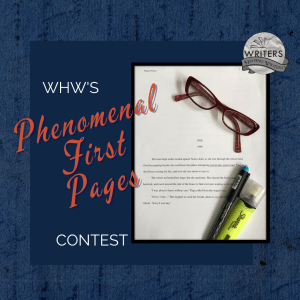 Hey, wonderful writerly people! It���s time for our monthly first-page critique contest
Hey, wonderful writerly people! It���s time for our monthly first-page critique contest 
If you���re working on a first page (in any genre except erotica) and would like some objective feedback, please leave a comment. Any comment :). As long as the email address associated with your WordPress account/comment profile is up-to-date, I���ll be able to contact you if your first page is chosen. Just please know that if I���m unable to get in touch with you through that address, you���ll have to forfeit your win.
Two caveats:
 Please be sure your first page is ready to go so I can critique it before next month���s contest rolls around. If it needs some work and you won���t be able to get it to me right away, let me ask that you plan on entering the next contest, once any necessary tweaking has been taken care of. Resources for common problems writers encounter in their opening pages can be found here.
Please be sure your first page is ready to go so I can critique it before next month���s contest rolls around. If it needs some work and you won���t be able to get it to me right away, let me ask that you plan on entering the next contest, once any necessary tweaking has been taken care of. Resources for common problems writers encounter in their opening pages can be found here.
 This contest only runs for 24 hours, start to finish, so get your comment in there!
This contest only runs for 24 hours, start to finish, so get your comment in there!
Three commenters��� names will be randomly drawn and posted tomorrow morning. If you win, you can email me your first page and I���ll offer my feedback.
We run this contest on a monthly basis, so if you���d like to be notified when the next opportunity comes around, consider subscribing to our blog (see the left-hand sidebar).
Best of luck!
PS: If you want to amp up your first page, grab our��helpful checklist��for��FIRST PAGES from One Stop for Writers.The post Phenomenal First Pages appeared first on WRITERS HELPING WRITERS��.
July 17, 2021
Relationship Thesaurus Entry: Forced Marriage
Successful stories are driven by authentic and interesting characters, so it���s important to craft them carefully. But characters don���t usually exist in a vacuum; throughout the course of your story, they���ll live, work, play, and fight with other cast members. Some of those relationships are positive and supportive, pushing the protagonist to positive growth and helping them achieve their goals. Other relationships do exactly the opposite, derailing your character���s confidence and self-worth or they cause friction and conflict that leads to fallout and disruption. Many relationships hover somewhere in the middle. A balanced story will require a mix of these dynamics.
The purpose of this thesaurus is to encourage you to explore the kinds of relationships that might be good for your story and figure out what each might look like. Think about what a character needs (good and bad), and build a network of connections for him or her that will challenge them, showcase their innermost qualities, and bind readers to their relationship trials and triumphs.
 Forced Marriage
Forced MarriageDescription:
A forced marriage is a union in which one or both of the people involved aren’t able to refuse it. (By comparison, arranged marriages are different, requiring consent from the people involved and where happiness tends to be considered more in the selection process.) Forced marriages may be orchestrated by the parties��� families, guardians, or cultural leaders and are vulnerable to violence and mental health difficulties.
It’s important to understand that while this practice is condemned in much of the world, it is still accepted in places (and happens illegally in others). Outside pressures and expectations will play a part in how quickly (if at all) a reluctant spouse will become subordinate to their partner, as will other factors, such as personality and access to information that runs counter to their culture’s accepted norms. All of this will determine the dynamics in this unorthodox relationship.
Relationship Dynamics
Below are a wide range of dynamics that may accompany this relationship. Use the ideas that suit your story and work best for your characters to bring about and/or resolve the necessary conflict.
One partner being happy with the arrangement while the other is not
Both parties facing the union with reluctance
An uncertain partner eventually coming to a place of resignation, satisfaction, or even happiness with the arrangement
The unhappy party being brainwashed or gaslighted by those who arranged the marriage
The union taking the unwilling party far from family members, loved ones, and their support system
The unwilling partner putting on an agreeable face while they inwardly are miserable, fearful, or angry
The unwilling partner being forced into compliance through threats or abuse by their spouse or through pressure from outside sources (parents, religious leaders, cultural expectations, etc.)
An abusive relationship that disregards the needs or desires of the unwilling party
Challenges That Could Threaten The Status Quo
Someone involved in forcing the marriage having a change of heart about the set-up
Law enforcement challenging the legality of the marriage
The couple being unable to conceive children (if this is important to either of them)
The dominant partner taking a second spouse
The unwilling partner developing skills or gaining knowledge that enables them to fight their oppressor
The unwilling partner fleeing the marriage
One party converting to another religion
The unwilling partner finding a sympathetic ally
The dominant spouse sustaining an injury or illness that makes them vulnerable
A social or cultural revolution that makes forced marriages less accepted or illegal
The couple having to relocate to a location where forced marriages are taboo
An unwilling wife becoming pregnant, making it harder for her to escape
The subordinate spouse falling in love with someone else
Conflicting Desires that Can Impair the Relationship
One partner wanting the marriage while the other does not
One partner wanting to control a spouse who desires autonomy
One party wanting out of the marriage, regardless of the outcome
One party wanting to convert to a different religion or leave their spouse’s religion
Either party seeking to kill the other
One spouse wanting to learn and grow while the other wants to keep things as they are
Clashing Personality Trait Combinations
Controlling and Rebellious, Independent and Needy, Weak-Willed and Persuasive, Dishonest and Honorable, Courteous and Disrespectful, Confrontational and Timid, Mature and Irresponsible, Trusting and Manipulative
Negative Outcomes of Friction
Depression and loneliness
Feeling trapped and helpless
Being motivated by fear (of violence, being disowned, letting one���s family down)
Arguments and fights
Abuse
Being ostracized by family or society because of one’s unwillingness to comply
Losing relationships with friends, family members, or potential love interests
Becoming resigned to the arrangement
Subjecting oneself to the dominant spouse; losing one’s sense of identity and self
Being killed by an abusive partner
Fictional Scenarios That Could Turn These Characters into Allies
Sharing grief in the death of a beloved family member
Experiencing and having to survive a shared trauma that creates a balance of power between the two parties
A situation that makes divorce a desirable option for both parties
Facing a common threat (someone threatening their child, a violent regime taking power, etc.)
Ways This Relationship May Lead to Positive Change
The dominant spouse experiencing a significant event that causes a change of heart
The unwilling partner coming to highly value the people in their support system
A subordinate spouse who cannot escape the marriage becoming determined to hold onto who they are and what they believe
A subordinate spouse recognizing their own strengths and finding ways to use them to help others
A subordinate spouse who can’t get out of the arrangement determining to find joy where they can and focus on the positive aspects of life
The unwilling spouse escaping the marriage and becoming an advocate for others
An “outsider” seeing the situation and deciding to fight this specific injustice
Themes and Symbols That Can Be Explored through This Relationship
Alienation, Beauty, Beginnings, Betrayal, Coming of age, Crossroads, Danger, Enslavement, Evil, Freedom, Friendship, Hope, Innocence, Isolation, Journeys, Love, Obstacles, Perseverance, Rebellion, Refuge, Religion, Suffering, Vulnerability
Other Relationship Thesaurus entries can be found here .
 Need More Descriptive Help?
Need More Descriptive Help?While this thesaurus is still being developed, the rest of our descriptive collection (15 unique thesauri and growing) is accessible through the One Stop for Writers THESAURUS database.
If you like, swing by and check out the video walkthrough, and then give our Free Trial a spin.
The post Relationship Thesaurus Entry: Forced Marriage appeared first on WRITERS HELPING WRITERS��.
July 13, 2021
What’s Your Character’s Love Language? (And Why Does it Matter?)
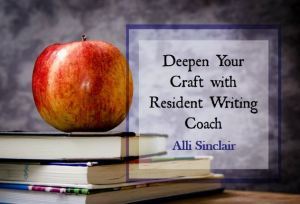
By Alli Sinclair
Creating characters can be an exciting time for writers, but it can also cause headaches if we don���t understand what motivates them or how they should react to certain situations and people. Aside from doing questionnaires and asking the right questions, there are other ways we can dig deep into our character���s psyche so we can bring two very different characters together or, if we prefer, keep them apart with lots of wonderful conflict.

Gary Chapman, who has written the excellent book, The Five Love Languages, believes each of us have one or two distinct love languages that speak to our hearts, that make us feel loved and valued. These love languages are not just for romantic relationships, but also our relationships with siblings, parents, children, friends and even our co-workers and bosses. But first, what are the love languages?
Love languages can be broken into five categories:
Words of AffirmationAffection is expressed through spoken word, praise or appreciation. Quotes, love notes, song lyrics and text messages can really make someone���s day if they speak this love language.
Quality TimeSomeone who speaks this love language wants you to put down the phone, turn off the television, make eye contact and actively listen. They want your undivided attention and to feel that you are present in the moment with them and you want to be there.
Receiving GiftsGifts are a symbol of love for someone who speaks this language. The gift itself is not important and it doesn���t have to be expensive, it���s the thought and effort that counts. For example, if your sister has a book series and one of them is missing from the out-of-print collection and you track down that missing copy, it will mean the world to her if receiving gifts is her love language.
Acts of ServicePeople who speak this language feel loved when others do things for them. It can be as simple as putting the dishes away or washing the car without them asking you to. These kind gestures warm their heart and people who value acts of service are always doing things for others.
Physical Touch
This is not just about sex. People whose love language is physical touch show they care through hugs, holding hands, a small pat on someone���s arm, offering to give a massage at the end of your long day. Being in someone���s vicinity, not necessary touching, makes those who value physical touch very happy.
I���d like you to try this 5 Love Languages Quiz (it only takes a few minutes) and see what your love languages are. Once you���re done, think about a relationship you have with someone you love dearly���a family member or friend. Perhaps ask them to take the quiz to find out their exact love language. Now compare theirs to yours. What similarities do you possess, and can you see areas where there could be conflict?
For example, one of you might be an Acts of Service person while the other values Quality Time. What happens when the Acts of Service person spends a lot of time showing they care by doing thoughtful things such as doing the washing, doing the gardening or renovating the house for the Quality Time person, who would much prefer Acts of Service to sit down and be in the moment with them? Good intentions aside, this could cause an array of conflict and misunderstanding between two people.
This is where you can have a lot of fun devising various sources of conflict between characters. To discover your character���s love languages, take the quiz on their behalf and compare the answers to other characters in your story. This may help you find ways to make them allies, or you might find new ways to create barriers between them.
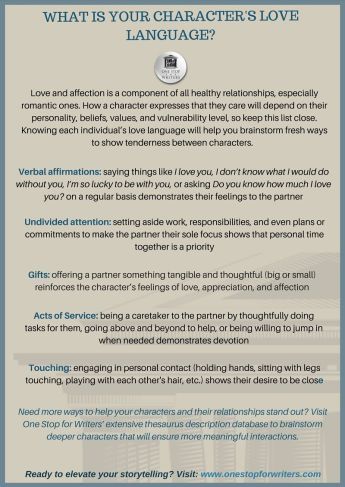
Love languages can vary depending on who your character is with. For instance, the protagonist’s main love language at work might be Words of Affirmation while their love language with their sister is Acts of Service. With their spouse it might be Physical Touch. The character may deeply love each of these people, but the message can get lost if they’re not speaking in a language that the other understands.
Love languages can also change based on the character’s stage of life. For someone who’s dating in their twenties, Physical Touch could be their love language. But in their forties, with a young family and a hectic work life, it might shift to Acts of Service.
(Download the Love Languages Checklist.)
Misunderstandings can easily occur when people are speaking two different verbal languages. You get the same result when people express and receive love differently. So taking some time to figure out the love languages for the important members of your cast can give you great ideas for how to bring them together or pull them apart.
What love language do you or your characters speak? Did the answers surprise you?
Happy writing!
 Alli SinclairResident Writing Coach
Alli SinclairResident Writing CoachAlli is an Australian multi-award winning and bestselling author whose fact-based fiction explores little-known historical events. Alli���s books have been voted into the Top 100 Australian novels of all time and when she���s not writing novels, Alli is working on international film and TV projects as a screenwriter and producer.
Alli hosts the Writers at Sea cruise retreat for writers, presents writing workshops internationally, and volunteers as a role model for Books in Homes. Alli is an experienced manuscript assessor and loves to work with writers to help their manuscripts shine.
Website | Newsletter | Facebook | Twitter | Instagram | Goodreads
The post What’s Your Character’s Love Language? (And Why Does it Matter?) appeared first on WRITERS HELPING WRITERS��.
July 10, 2021
Relationship Thesaurus Entry: Master and Apprentice
Successful stories are driven by authentic and interesting characters, so it���s important to craft them carefully. But characters don���t usually exist in a vacuum; throughout the course of your story, they���ll live, work, play, and fight with other cast members. Some of those relationships are positive and supportive, pushing the protagonist to positive growth and helping them achieve their goals. Other relationships do exactly the opposite���derailing your character���s confidence and self-worth���or they cause friction and conflict that leads to fallout and disruption. Many relationships hover somewhere in the middle. A balanced story will require a mix of these dynamics.
The purpose of this thesaurus is to encourage you to explore the kinds of relationships that might be good for your story and figure out what each might look like. Think about what a character needs (good and bad), and build a network of connections for him or her that will challenge them, showcase their innermost qualities, and bind readers to their relationship trials and triumphs.
 Master and Apprentice
Master and ApprenticeDescription:
A master is a highly skilled worker with much talent and experience who trains an apprentice in a particular vocation. This relationship may go on for years for the apprentice to be properly trained and prepared to work on their own. Traditionally, the relationship exists in trade vocations, such as masonry, metalwork, welding, etc. In modern times, fields such as architecture, artistry, medicine, computer programming, and others may utilize an apprenticeship structure.
Relationship Dynamics
Below are a wide range of dynamics that may accompany this relationship. Use the ideas that suit your story and work best for your characters to bring about and/or resolve the necessary conflict.
The apprentice wanting to learn a trade and taking to the master���s teachings enthusiastically
An apprentice having the confidence to solve problems and make decisions without needing hand-holding
The apprentice having a half-hearted attitude about the situation (underachieving, showing up late, not doing one’s best, etc.)
The apprentice being unteachable (because the apprentice is only pursuing the trade to please someone else, they feel they know more than the master, etc.)
An apprentice needing constant affirmation and encouragement
The master knowing their trade well and delighting in training apprentices
The master wanting to do anything possible to make the apprentice successful
An apprentice being partner with a master who is strong in their craft but weak on mentoring and teaching
The master being so busy that the apprentice is constantly being sidelined or made to wait
A master not trusting the apprentice with important jobs; giving them busy work that robs them of the ability to learn and improve
Either person taking credit for the other’s work or ideas
One party being more concerned with what they can get out of the relationship that what they can give
Using the relationship as an opportunity to dominate, control, or abuse the apprentice
Either party having biases or prejudice toward the other
Challenges That Could Threaten The Status Quo
The apprentice getting a better offer from someone else
The master taking on multiple apprentices
Either party developing a bias (socially, culturally, racially, etc.) against the other
The master becoming jealous of or feeling threatened by the apprentice’s skill
The apprentice reaching a skill level that makes them feel they don’t need further instruction
The master’s business booming, resulting in less time for them to devote to the apprentice
The apprentice surpassing the master’s skill level
The master falling ill
The apprentice causing a severe accident or disaster
The apprentice sustaining an injury that impacts their ability to work the trade
Either party dealing with a difficult personal situation that impacts their work performance
Either party discovering a hidden secret about the other party
The apprentice stealing the master���s ideas or work
The loss of the physical setting or tools necessary for training (due to fire, theft, disrepair, etc.)
A shortage of supplies needed for the trade
An economic downturn that results in financial hardship for the master
The apprentice being a willing learner but lacking skill, dexterity, strength, or another vital quality that limits their progress
Wounds That Could Factor into The Relationship
A learning disability, A parent���s abandonment or rejection, A speech impediment, An abuse of power, Battling a mental disorder, Being disappointed by a role model, Being fired or laid off, Being forced to keep a dark secret, Cracking under pressure, Falling short of society’s physical standards, Giving a child up for adoption, Growing up in the shadow of a successful sibling, Having a controlling or overly strict parent, Living with chronic pain or illness, Losing a limb, Losing one of the five senses, Social difficulties
Conflicting Desires that Can Impair the Relationship
The apprentice not wanting to learn the trade (because they were forced into the situation by a parent, for instance)
The master not wanting to share their knowledge
The apprentice wanting to do as little work as possible
The master wanting things done differently than the apprentice wants to do them
Either party wanting more control than the other party will yield
The apprentice wanting more praise than the master feels comfortable giving
The apprentice wanting to change masters or trades
The parties not wanting the same level of involvement in training
The parties having different desires for order and structure within the training
The apprentice wanting to prove themselves for the wrong reasons
Clashing Personality Trait Combinations
Ambitious and Lazy, Judgmental and Oversensitive, Nurturing and Withdrawn, Controlling and Weak-Willed, Independent and Needy, Mature and Irresponsible, Efficient and Scatterbrained, Cautious and Reckless, Confrontational and Timid
Negative Outcomes of Friction
Fights and arguments
The apprentice avoiding their training
The master bullying or belittling the apprentice
The master taking advantage of the apprentice so he or she can do less work
Either party feeling like a failure
The master feeling helpless in guiding the apprentice
Shame and feelings of worthlessness
Feeling trapped in the arrangement
One of the parties quitting and having to start over with a new partner
The apprentice being promoted without having learned the necessary skills
Fictional Scenarios That Could Turn These Characters into Allies
The master discovering a weakness in the apprentice that he or she is uniquely able to help them overcome (or vice-versa)
Finding common ground in an area of personal life
One party saving the other���s life in a hazardous situation
The apprentice���s success garnering attention for the master and their work
Standing united against a challenging third party (a customer, the boss, the apprentice’s family, etc.)
The master helping the apprentice find the right path in their professional life
The apprentice fulfilling a child or friendship role for the apprentice
Working together to innovate and create something new in their industry
Ways This Relationship May Lead to Positive Change
Both parties learning from one another and growing
The apprentice’s life being greatly enhanced through the apprenticeship and what results from it
The master finding renewed passion for their craft
Both parties learning to compromise and work together
Either party learning to self-advocate and create healthy boundaries
An apprentice discovering depths of talent or aptitude they didn’t know they had
Themes and Symbols That Can Be Explored through This Relationship
A fall from grace, A quest for knowledge, Beginnings, Coming of age, Friendship, Inflexibility, Innocence, Journeys, Knowledge, Passage of time, Stagnation, Teamwork
Other Relationship Thesaurus entries can be found here.
 Need More Descriptive Help?
Need More Descriptive Help?While this thesaurus is still being developed, the rest of our descriptive collection (15 unique thesauri and growing) is accessible through the One Stop for Writers THESAURUS database.
If you like, swing by and check out the video walkthrough, and then give our Free Trial a spin.
The post Relationship Thesaurus Entry: Master and Apprentice appeared first on WRITERS HELPING WRITERS��.
July 8, 2021
Changing Your Reader’s Perspective
As writers, we all know how difficult it can be to win readers over. The writing has to be strong, the events realistic, the characters well-rounded, etc. etc. We know the list of barriers to reader engagement, and there are ample resources to address the usual suspects.
But what if that barrier is a pivotal piece of the story itself? Maybe the main character is an unsympathetic one that readers aren���t likely to empathize with or root for. Or we might be taking a political or social stance on an issue that make readers uncomfortable.
Situations like these add another layer of complexity because for people to read that story, their perspective must first be challenged. We have to get them liking the miserable protagonist. We have to present a current event from an angle that gets them thinking about it in a new way. Without that shift in perspective, readers won���t buy in, and the story, no matter how well it���s written, will gather dust.
So how do we make that happen? One of the easiest ways is by using the rest of the cast.
This became clear to me during the third season of Stranger Things. In season two, Max���s stepbrother Billy didn’t have a whole lot going for him. He was abusive and treated everyone like crap. Through most of that season, there wasn’t much for viewers to dig about Billy.

But season three adds a new dimension to his profile: sex appeal. Like, massive. But how? How did everyone get from��What a jerk��to��Dude, he���s hot��in such a short span of time?
And then it hit me. It���s the cast. Viewers fell in line because of the rest of the cast.
The high school girls in Hawkins were already swooning, and that���s to be expected, because Billy���s got the whole Bad Boy thing going on. But writers upped the ante in season three. The first episode finds Billy working as a lifeguard at the local pool, where all the neighborhood moms have come to ogle him.
The moms are ogling.
They���re putting on their skimpiest suits and timing their arrival so they can eye him over their Ray-Bans as he makes his entrance. Every female over a certain age is suddenly drooling over Billy Hargrove.
This was fascinating to me because I never really thought of him as sex symbol material (awesome car and��Screw You��attitude notwithstanding). But everyone bought into it because the rest of the cast told them to. If the cast is saying the same thing, and we haven���t seen it, then we must have missed something. And we should, therefore, get on board. Peripheral characters can be super influential in this way. If you need to sway readers��� opinions about a character, use the rest of the cast to lead them where you want them to go.
Interestingly enough, this method also works for ideas and concepts.
One of the few books I still have from my childhood was about Robin Hood. Those stories fascinated me; I mean, he was such a good guy, looking out for the poor and fighting the dictatorial powers-that-be. I was into my teens before it occurred to me that the hero I���d been rooting for was a thief and a criminal.
These facts don���t stop people from loving him. The Robin Hood legend originated in the 14th century and is constantly being reinvented and explored through books, song, movie, and who knows what other formats. Most people admire him���even while believing that stealing is morally wrong and order in society should be upheld. Yet we suspend judgment in his case. Why?
Partly because the other characters in and around Nottingham all loved Robin Hood. If they weren���t venturing into Sherwood to join him, they were supporting him in his anti-establishment campaign. After all, he wasn���t stealing to benefit himself; he was stealing to help them���the impoverished and undervalued. And he���s stealing from bad guys, the ones who are actively mistreating the common people. When you look at it from their perspective, what he���s doing isn���t bad, right? It���s actually good.
And voil��! A hero is born.
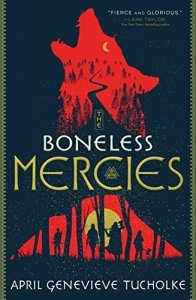
I found another example in a recent read called The Boneless Mercies. In a Viking-esque setting, Frey leads a band of girls who make their living by committing mercy killings. Would someone in your family be better off dead? You want to die yourself? Hire Frey, and her Mercies will take care of it.
Sounds pretty out there, right? Like, how could that ever be a legitimate thing? But because the people of this world place a high value on bravery and dying a good death, and because they view the concept of mercy killings as acceptable, the idea becomes believable and a natural part of the fictional landscape. Readers may not embrace it, but it���s no longer a barrier to entry.
These examples showed me that the secondary characters in a story can be very powerful in influencing reader opinion. Authors who need to challenge the reader���s ideas can deftly wield these characters as tools. And the process is really quite simple.
First, endow the cast members with the beliefs, ideals, or opinions that you want your reader to share or at least consider. Have the rest of the characters admire the bad guy in some way. Make them sympathetic to an unpopular idea. Let them approach existing social or political ideas from a different viewpoint. The more naturally you can do this, the better. Don���t make a big statement; just show that this is normal for the cast, and it���s more likely to become normalized for the reader.
For instance, The Boneless Mercies opens with Frey���s band at work. It���s a peaceful scene, with the mark being completely at ease as Frey makes her comfortable���offering her wine, discussing the woman���s life, using soft words and gentle touches. And somewhere in the scene, we see these lines: She���d hired us herself. Her husband, children���all dead from sickness.
Without a lot of fanfare, and through the context of what���s happening, the author shows us that this woman wants to die. It���s a mercy killing, and it seems to be somewhat normal, just a matter of course. From page one, readers learn that this is part of the culture. They���re able to suspend their own judgment for this particular story.
Secondly, remember that readers will be more likely to change their stance if the author provides that all-important empathy piece. Billy Hargrove���s backstory of abuse makes it easier for us to view him positively. Robin Hood���s policy of theft and wealth distribution is more palatable because of the environment of injustice it seeks to resolve. Years of gently killing the old, feeble, and infirm have taken their toll on Frey���s Mercies, infringing on their basic human needs of esteem and self-actualization; this humanization makes them relatable and easy to empathize with. Research your setting, the character���s backstory, and their flaws and weaknesses so you���ll know which bits are most likely to pull the reader���s heartstrings, and be sure to include that information. One Stop for Writers’ Character Builder is a great tool for helping you figure these pieces out.
Listen, writing is hard. Telling a story about concepts or characters that readers find repugnant is even harder. But those stories are still worth telling. Empower your cast with the role of challenging your reader���s perspective, and the job will become a whole lot easier.
The post Changing Your Reader’s Perspective appeared first on WRITERS HELPING WRITERS��.
Writers Helping Writers
- Angela Ackerman's profile
- 1014 followers



